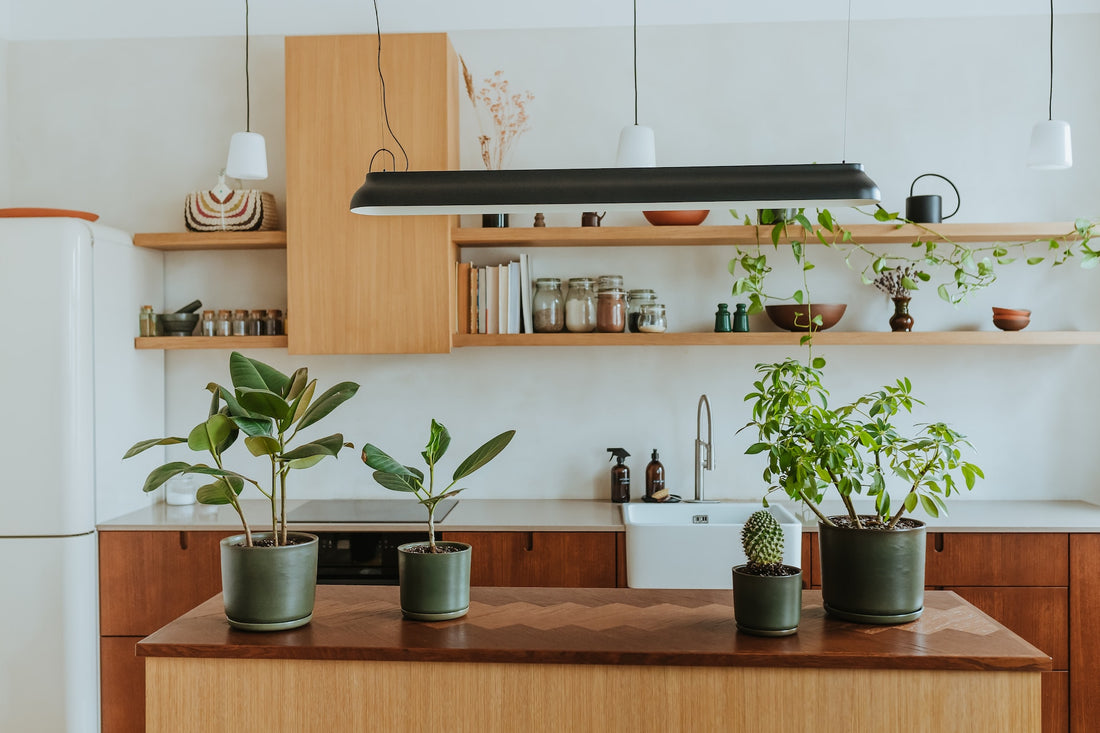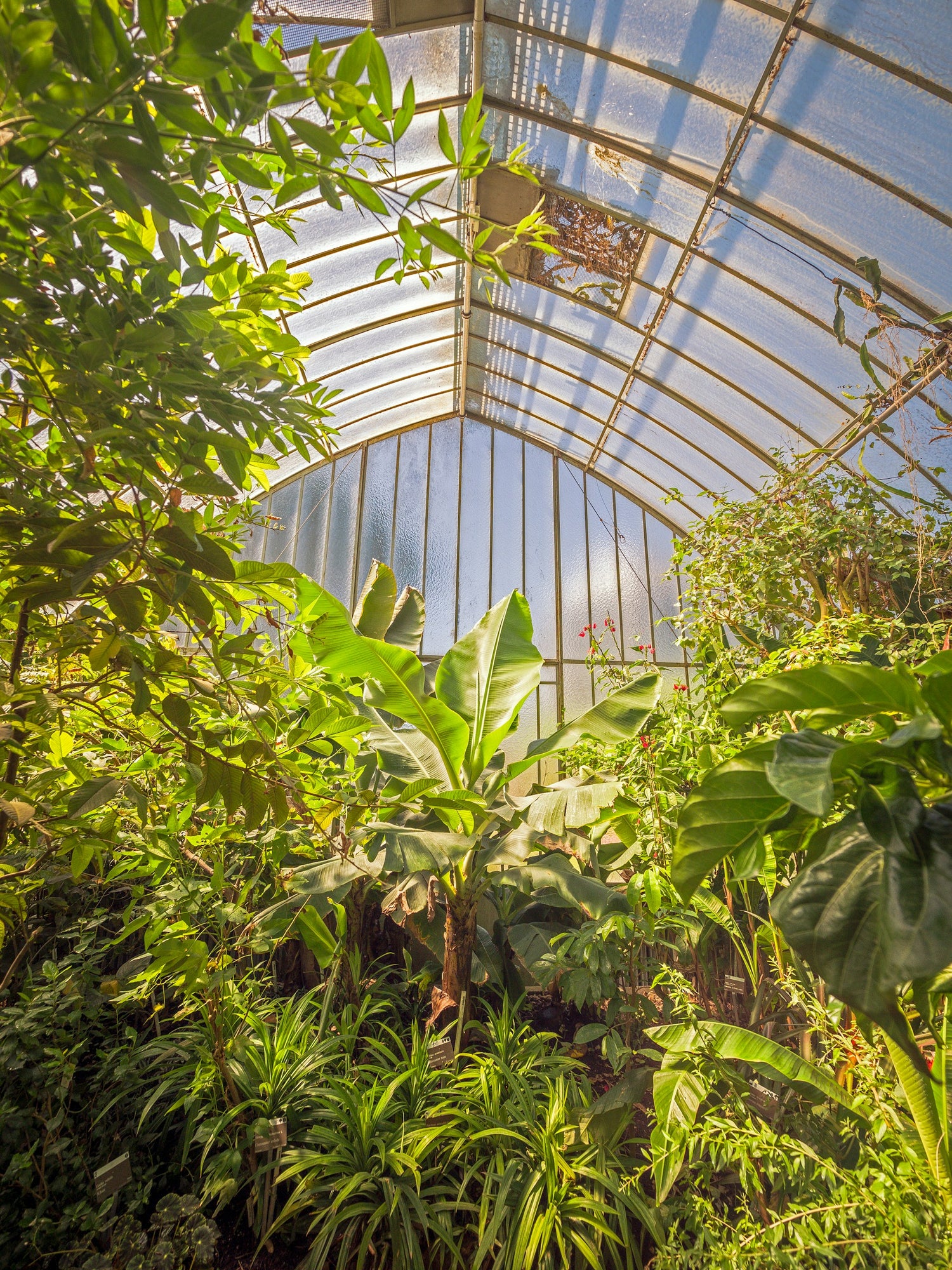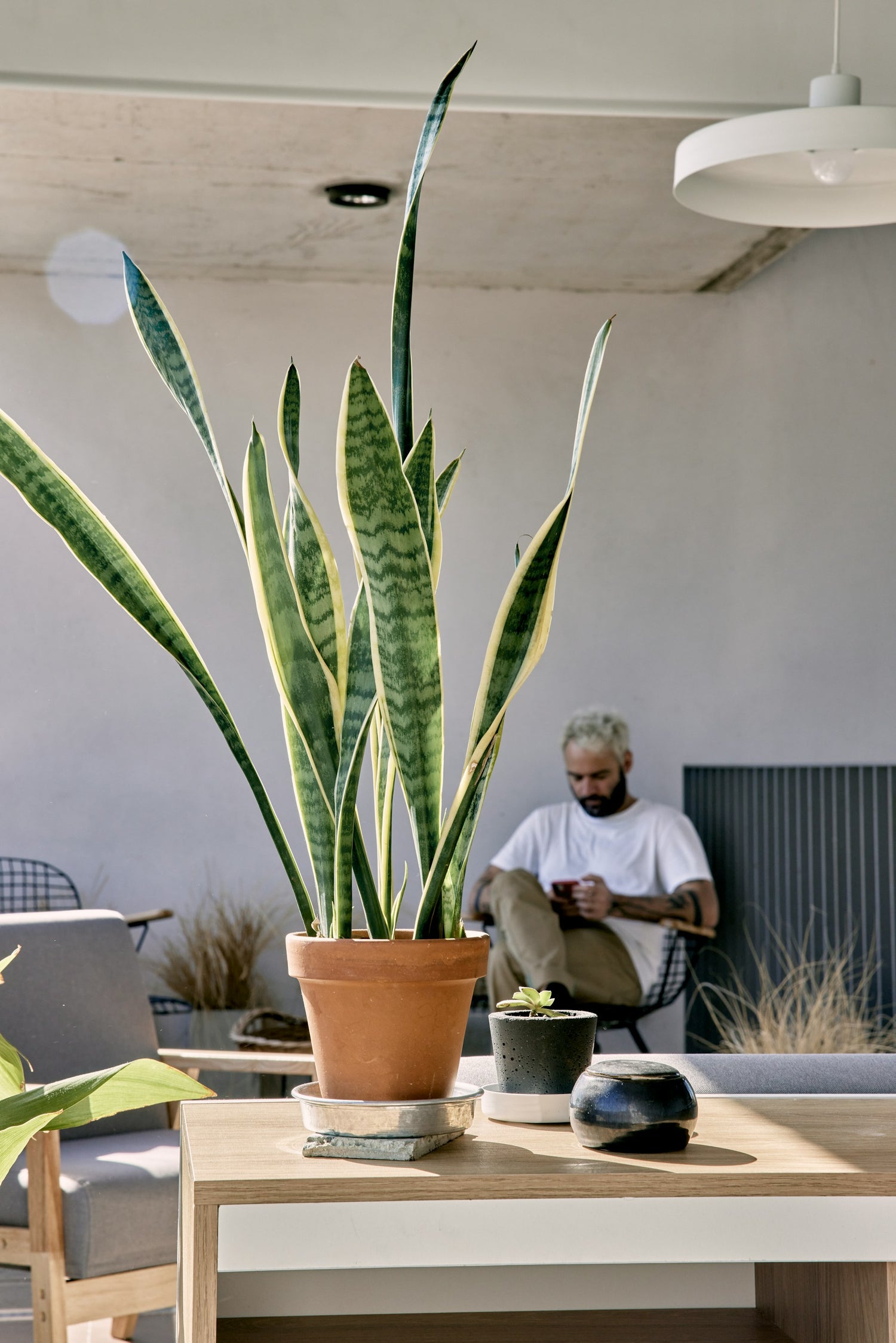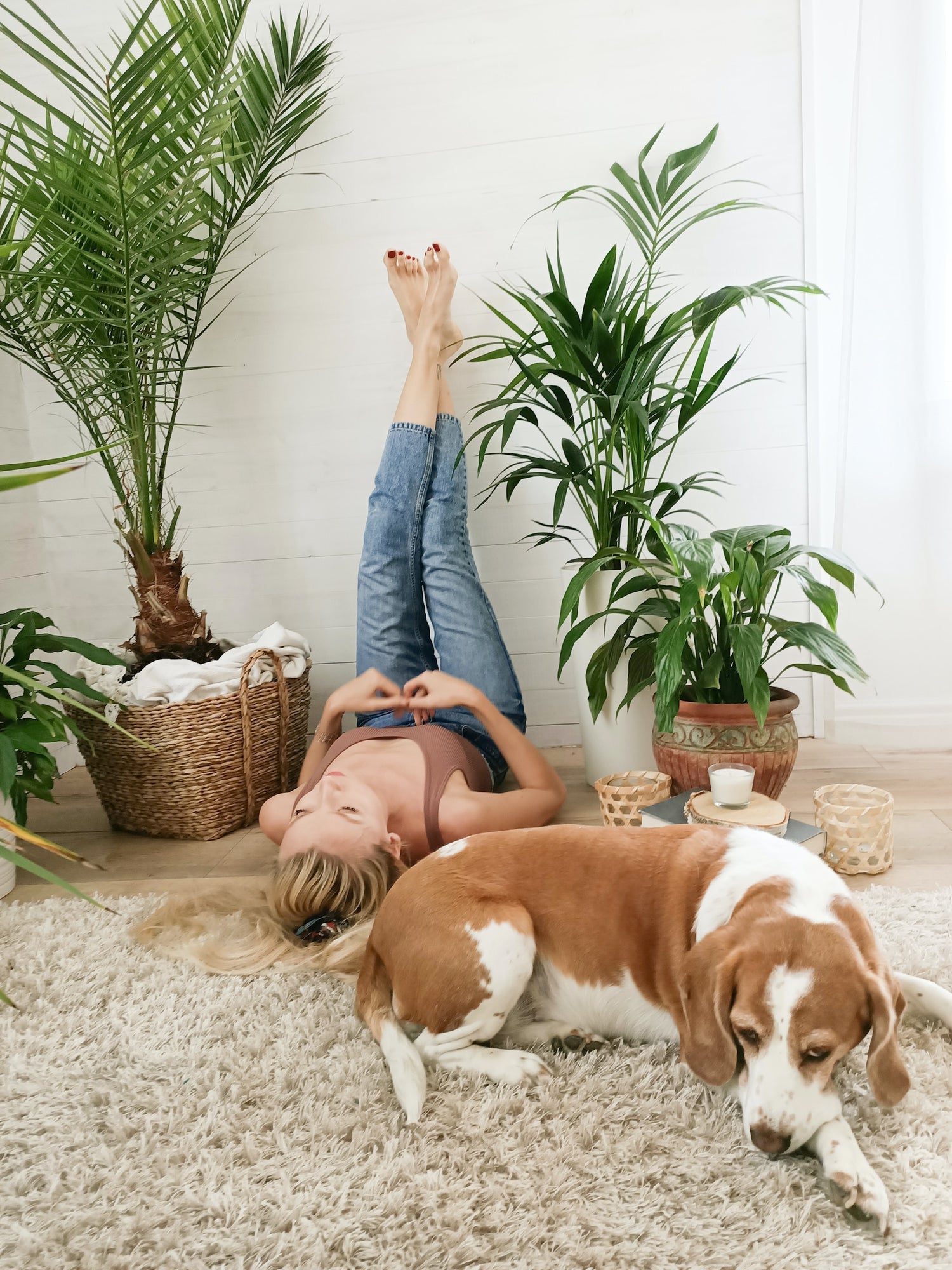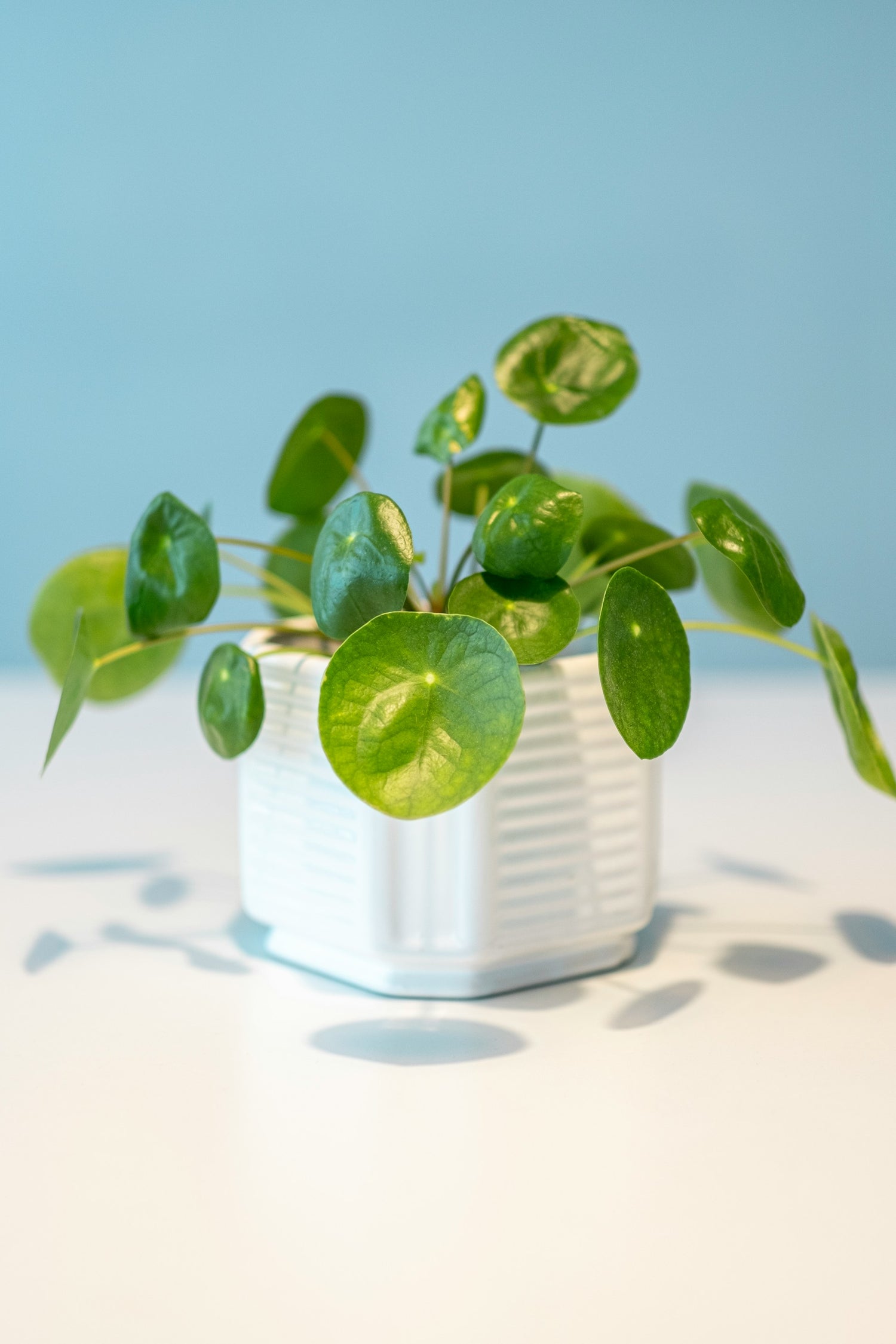Houseplants aren't just decorative. They're a lifestyle upgrade, defining your personal space. They purify the air and boost your mood. But, to reap these benefits, they need proper care. This guide is your roadmap to thriving houseplants.
Table of Contents
- Understanding Your Houseplant
- Essentials of Houseplant Care
- 💦 How to Water Your Houseplant
- 🌞 Finding the Right Light for Your Plants
- 🌡 Maintaining Ideal Temperature and Humidity for Plants
- Nutrition and Soil
- Common Issues and Solutions
- 🕷 Dealing with Pests in Houseplants
- 🩺 Treating Diseases in Plants
- 🔍 Troubleshooting Other Common Plant Issues
- 💗 Why Specialized Care Matters in Plant Shopping
- Advanced Care Techniques
- Seasonal Care
- The Rewarding Journey of Growing with Your Plants
- References and Resources
1. Understanding Your Houseplant
Every houseplant has unique needs. Identifying them is crucial. This ensures optimal growth and health.
Is your plant a sun-seeker or a shade-lover? Does it prefer a desert's dryness or a rainforest's humidity? Knowing questions like these is key to a thriving indoor garden.
If you want to quickly find the best plant for your space, care style, and experience your can take our plant quiz. Or keep reading. The next section is the most crucial!
2. Essentials of Houseplant Care
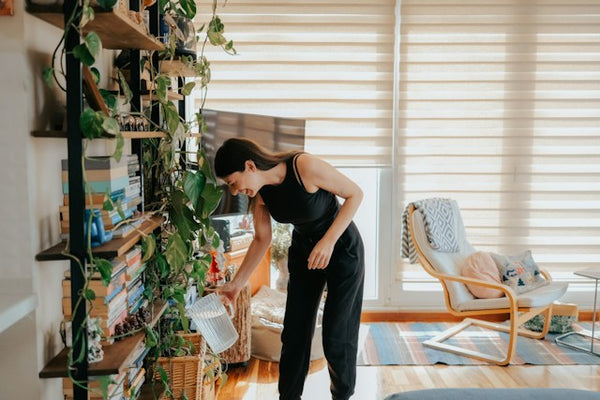
How to Water Your Houseplants
Understanding watering needs is crucial. Each plant has unique requirements. Some thrive on minimal water, others need more frequent watering.
Signs of overwatering include soft, yellowing leaves and root rot. Underwatering shows as dry, crispy leaves and stunted growth. Monitoring soil moisture helps prevent both.
A good practice is the 'finger test'. Insert a finger into the soil. If it's dry an inch below the surface, it's time to water. This simple check helps you water correctly.
The temperature of the water matters. Use room-temperature water to avoid shocking the plant’s roots. Cold water can be detrimental, especially for tropical plants.

Watering frequency is influenced by factors like home warmth, plant type, and interestingly even pot type!
Terracotta pots absorb water, drying out soil faster than plastic pots. Thus, plants in terracotta may require more frequent watering.
Generally, it's better to underwater than overwater. Overwatering can lead to root rot, a serious condition that is harder to remedy. Underwatered plants usually recover when properly hydrated.
If you're worried about overwatering, consider using pots with drainage holes and a plastic saucer underneath to catch excess water.
For pots without drainage, adding a layer of lava rocks at the bottom can create space for excess water, reducing the risk of root rot.
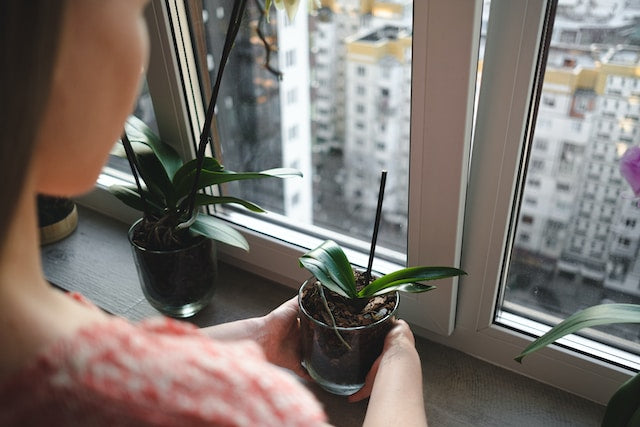
Finding the Right Light for Your Plants
Different plants have varied light needs. Some require bright, direct sunlight, while others thrive in indirect or low light.
- Direct Light - You can see the sun directly when you tilt your head up from where the plant sits.
- Indirect Light - The plant receives ambient light without the sun rays shining directly on it.
Light is food for a plant. The plant uses light in a process called photosynthesis, where plants convert light into energy. Water, light, and carbon dioxide produces energy for the plant and oxygen for us.
You will also often see the term of bright, medium, or low light used.
- Bright Light - The plant is in front of the window.
- Medium Light - The plant is 2 feet away from the window.
- Low Light - The plant is further than 2 feet from the window.
The amount of time your plant is exposed to light varies with window direction. The following are for the northern hemisphere, for example USA.
- North-facing windows provide the least light.
- South-facing windows provide the most light.
- East and West-facing windows are moderate in light.
So if your plant wants bright light, putting it in a South-facing window would give it the most amount of time under that bright light.
You can check the orientation of your window using the compass app on your phone.
The reason behind this variation lies in the sun's path. In the northern hemisphere, i.e. United States, the sun is always to the south. Thus, south-facing windows receive the most direct sunlight throughout the day.
Human perception of light differs from plant needs. What seems bright to us may not be enough for plants. Ensure they are close enough to the light source, preferably near windows.
If natural light is insufficient, consider artificial grow lights. They can supplement or replace natural sunlight, especially in darker spaces.
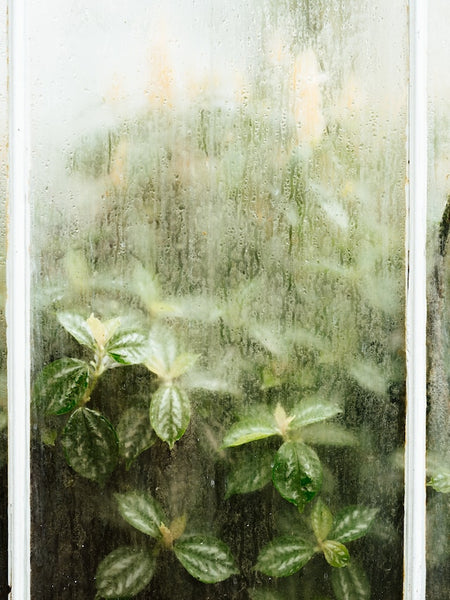
Maintaining Ideal Temperature and Humidity for Plants
Temperature and humidity are crucial for plant health. Most houseplants prefer temperatures between 65-75°F (18-24°C) and moderate humidity.
Tropical plants need higher humidity. Consider a humidifier or misting. For plants needing less humidity, avoid damp areas like bathrooms.
Be mindful of seasonal changes. Protect your plants from drafts in winter and excessive heat in summer. Consistency is key to a healthy plant.
How to Increase Humidity for Your Plants
There are several effective ways to boost humidity for your plants:
- Misting: Regularly misting plants with water can increase the moisture level in the air around them.
- Humidifiers: Using a room humidifier is an excellent way to maintain consistent humidity levels, especially in drier climates or during winter.
- Trays with Pebbles and Water: Placing your plants on a tray filled with pebbles and water can help increase humidity as the water evaporates.
- Grouping Plants: Grouping plants together creates a microclimate with higher humidity due to collective transpiration.
- Positioning Near Water Sources: Placing plants in bathrooms or kitchens, where humidity is naturally higher, can also be beneficial.
3. Nutrition and Soil

Choosing the Right Soil for Your Houseplants
The right soil is fundamental for plant health. Different plants need different soil types. Some prefer well-draining soil, while others need moisture-retentive mixes.
For instance, cacti and succulents thrive in sandy, well-draining soil. Conversely, tropical plants like richer, loamier mixtures (40% sand, 40% silt, 20% clay). Tailoring soil to your plant's needs is essential.
Fertilizing: When and How Often
Fertilizer provides essential nutrients for growth. However, over-fertilizing can harm your plants. It's important to get the balance right.
Most houseplants benefit from regular fertilizing during their growing season, typically spring and summer. Use a balanced, water-soluble fertilizer for best results.
In winter, reduce or stop fertilizing. Plants usually enter a dormant phase and require less nutrient input. Always follow the specific guidelines for your plant species.
4. Common Issues and Solutions
Dealing with Pests in Houseplants
Pests such as spider mites, aphids, and mealybugs are common in houseplants. Spotting them early is crucial for control.
Isolating affected plants can prevent the spread. For an eco-friendly solution, consider products like Arber, an organic insecticide. Regular leaf inspections and cleanings are also effective preventive measures.
Treating Diseases in Plants
Plant diseases often result from environmental stress, like overwatering, which can cause root rot. Proper air circulation is vital to prevent fungal diseases.
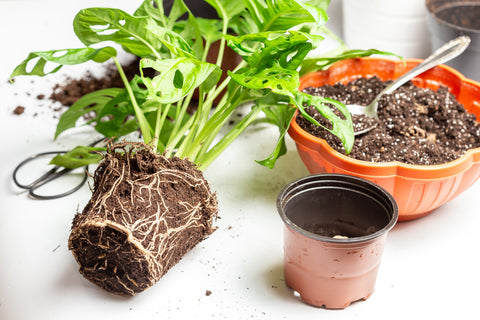 Plant with healthy roots. Firm, white color, not overcrowded, & no odor
Plant with healthy roots. Firm, white color, not overcrowded, & no odor
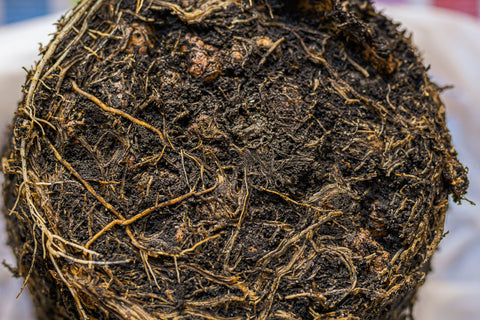 Plant with root rot. Brown/black discoloration is a signal of decay.
Plant with root rot. Brown/black discoloration is a signal of decay.
Signs of disease include wilting or discolored leaves. Quick responses, such as trimming affected parts, adjusting watering, and improving air flow are essential. Repotting in fresh soil can also be beneficial.
Troubleshooting Other Common Plant Issues
Yellowing leaves might indicate overwatering or nutrient deficiency. Drooping leaves could be a sign of under-watering or root issues.
Understand your plant’s needs for accurate diagnosis. Adjust care routines as necessary. Consistent care is crucial for plant health.

Why Specialized Care Matters in Plant Shopping
When choosing where to buy your houseplants, consider the store's environment. Large department stores and supermarkets often store plants in suboptimal conditions, like basements or dark warehouses.
This and improper watering can lead to health issues in plants, making them more susceptible to pests and diseases.
At our store, our specialized plant team takes meticulous care of each plant. We use organic solutions like Arber to manage pests, ensuring optimal health and growth.
This dedication allows us to guarantee the health of every plant we sell. Choosing a specialized plant store means investing in quality and long-term plant health.
5. Advanced Care Techniques

Pruning and Grooming Your Houseplants
Pruning isn’t just about aesthetics; it's vital for plant health. Remove dead or overgrown branches and leaves to encourage healthy growth and shape.
When pruning, cut just above a leaf node or junction. Prune during the plant's growing season, typically spring or early summer, for best results.

Grooming also includes cleaning leaves. Dust can block sunlight and reduce photosynthesis. Wipe leaves gently with a damp cloth to keep them clean and healthy.
When and How to Repot Houseplants
Repotting is essential for growth. Signs you need to repot include roots growing through drainage holes, slowed growth, or the soil drying out too quickly.
Choose a pot that’s slightly larger than the current one. Gently remove the plant, trim any excessively long roots, and repot with fresh soil. Ensure the pot has adequate drainage. Repotting is best done in the spring.
6. Seasonal Care

Spring and Summer Care for Houseplants
Spring and summer are growth seasons. Increase watering as plants resume active growth. Fertilize regularly for nutrient support.
Watch out for longer daylight hours. Adjust plant positions if needed to avoid overexposure to sunlight. This is also a great time for repotting if necessary.
Fall and Winter Care for Houseplants
During fall and winter, plants often enter a dormant phase. Reduce watering and stop fertilizing. Plants need less water as growth slows down.
As natural light decreases, consider supplemental lighting. Protect plants from cold drafts and heating vents. This helps maintain a stable environment for your plants.
7. The Rewarding Journey of Growing with Your Plants

Caring for houseplants is a rewarding journey. It enhances your living space, improves air quality, and brings a sense of fulfillment.
Remember, understanding your plant's unique needs is crucial. Whether it's watering, lighting, or dealing with pests, each step is vital to your plant’s health. Embrace these practices, and you’ll see your green friends thrive.
Start with one plant, learn, and gradually expand your indoor garden. Whether you're a novice or a seasoned plant owner, there's always more to discover in the world of houseplants. Let your plant care adventure begin!
Choosing the Right Plant for You
- Assess Your Space: Choose the right window for your plant's lighting needs (refer to Section #3).
- Consider Your Lifestyle: Evaluate your time and willingness for plant care (consider factors from Sections #2 and #3).
- Understand Plant Requirements: Match plants to your home’s environment, considering temperature and humidity (as discussed in Section #3).
- Personal Preferences: Select plants that fit your aesthetic and personal style, keeping in mind size and growth patterns.
8. References and Resources
Expanding your knowledge about houseplants is key to successful plant parenting. Below are some valuable resources to deepen your understanding and skills:
- Books: “The House Plant Expert” by Dr. D.G. Hessayon, “How Not to Kill Your Houseplant” by Veronica Peerless, and others offer in-depth insights into plant care.
Remember, the journey of plant care is ongoing. With each plant there’s always something new to learn, you can bookmark this page if you need a refresher on important plant care topics.
We're thrilled you made it to the end of our comprehensive guide on houseplant care. Your dedication to learning more about nurturing your green friends deserves a reward!
As a token of our appreciation, we're excited to offer you a 5% discount on your next purchase from our store. Use the code CAREGUIDE at checkout to enjoy this special offer.
Keep growing, keep learning, and most importantly, keep nurturing your love for plants!
